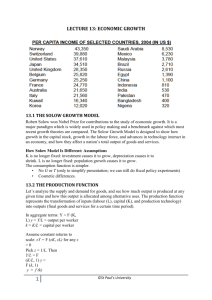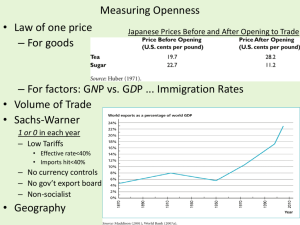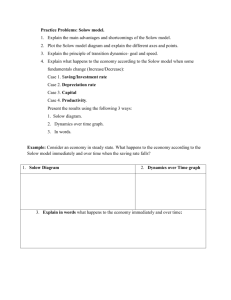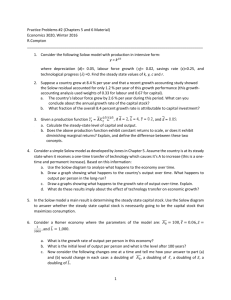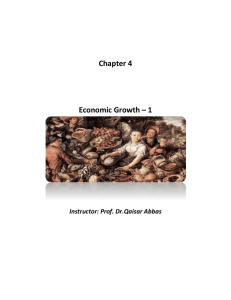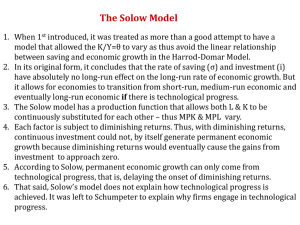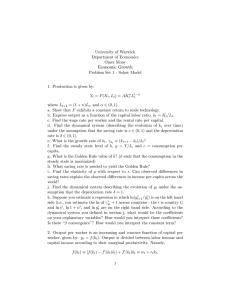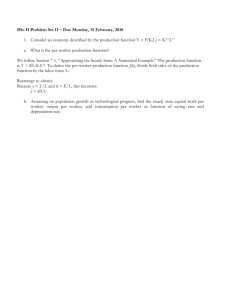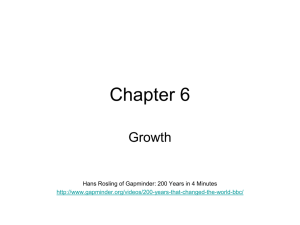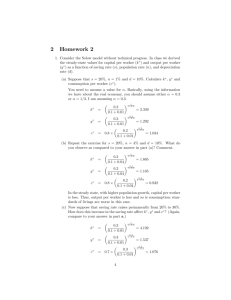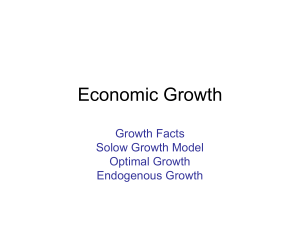Problem Set 6: Economic Growth (II) 1. The predictions of the Solow
advertisement
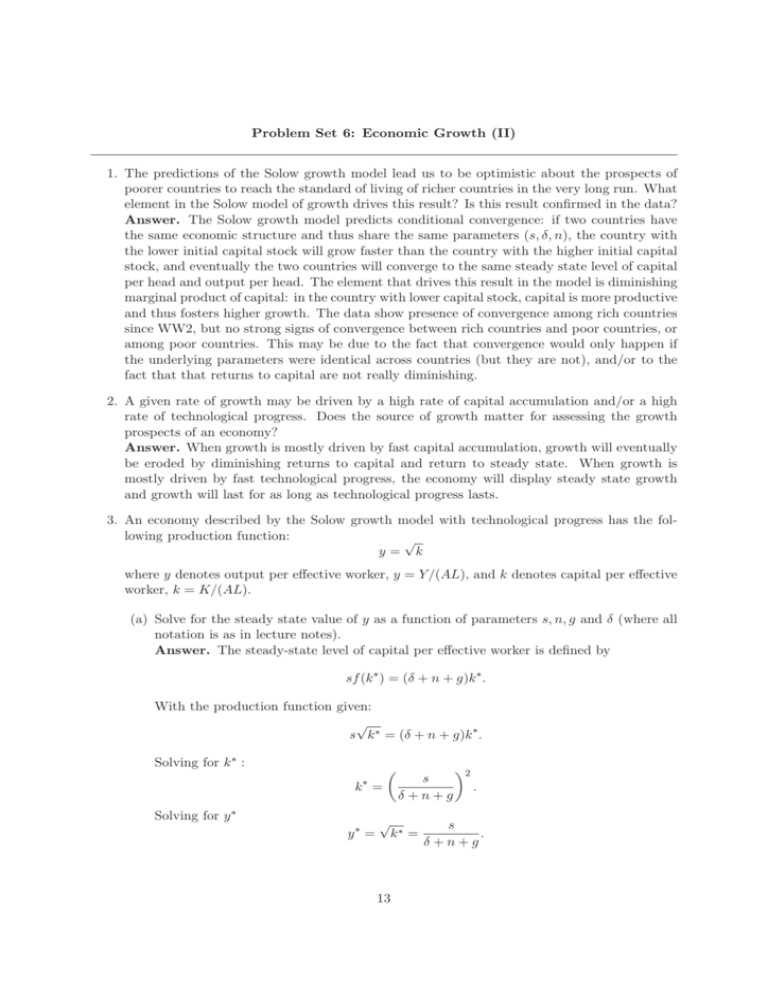
Problem Set 6: Economic Growth (II) 1. The predictions of the Solow growth model lead us to be optimistic about the prospects of poorer countries to reach the standard of living of richer countries in the very long run. What element in the Solow model of growth drives this result? Is this result con rmed in the data? Answer. The Solow growth model predicts conditional convergence: if two countries have the same economic structure and thus share the same parameters (s; ; n), the country with the lower initial capital stock will grow faster than the country with the higher initial capital stock, and eventually the two countries will converge to the same steady state level of capital per head and output per head. The element that drives this result in the model is diminishing marginal product of capital: in the country with lower capital stock, capital is more productive and thus fosters higher growth. The data show presence of convergence among rich countries since WW2, but no strong signs of convergence between rich countries and poor countries, or among poor countries. This may be due to the fact that convergence would only happen if the underlying parameters were identical across countries (but they are not), and/or to the fact that that returns to capital are not really diminishing. 2. A given rate of growth may be driven by a high rate of capital accumulation and/or a high rate of technological progress. Does the source of growth matter for assessing the growth prospects of an economy? Answer. When growth is mostly driven by fast capital accumulation, growth will eventually be eroded by diminishing returns to capital and return to steady state. When growth is mostly driven by fast technological progress, the economy will display steady state growth and growth will last for as long as technological progress lasts. 3. An economy described by the Solow growth model with technological progress has the following production function: p y= k where y denotes output per e¤ective worker, y = Y =(AL), and k denotes capital per e¤ective worker, k = K=(AL): (a) Solve for the steady state value of y as a function of parameters s; n; g and (where all notation is as in lecture notes). Answer. The steady-state level of capital per e¤ective worker is de ned by sf (k ) = ( + n + g)k : With the production function given: p s k = ( + n + g)k : Solving for k : k = s +n+g Solving for y y = p k = 13 2 : s : +n+g (b) A developed country has a saving rate of 28% and a population growth rate of 1% per year. A less-developed country has a saving rate of 10% and a population growth rate of 4% per year. In both countries, g = 0:02 and = 0:04: Find the steady-state value of y for each country. Answer. For the developed country: y = 0:28=(0:04 + 0:01 + 0:02) = 4: For the lessdeveloped country: y = 0:10=(0:04 + 0:04 + 0:02) = 1: (c) What policies might the less-developed country pursue to raise its level of income? Answer. (i) Lowering the growth rate of population - for example with birth control campaigns and subsidized/free birth control. (ii) Raising the saving rate, by reducing the government budget de cit and/or with private incentives to saving (reducing tax on capital gains, estate etc., replacing income with consumption tax, etc.). When trying to raise the saving rate, it makes sense to wonder what happens to steady state consumption. The golden rule for consumption requires f 0 (k ) = + n + g: With the numbers given f 0 (k ) = 12 (k ) 1=2 = 12 (as k = 1 in the less-developed country), and + n + g = 0:1. As the marginal product of capital is above + n + g, the economy is below the golden rule steady state, and an increase in s would increase consumption per e¤ective worker. 4. Describe the e¤ects of an increase in the saving rate on growth (i) in the Solow model, (ii) in the AK model. Answer. In the Solow model (with or without exogenous technological progress), an increase in the saving rate raises growth in the short run, but not in the long run, once the economy has again reached the new steady state. In the AK model, an increase in the saving rate permanently increases growth. (Show with diagrams). 14
